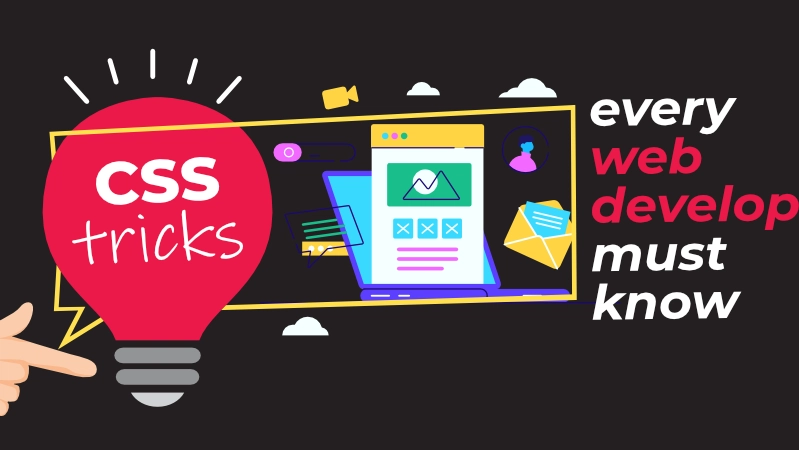CSS has come a long way from the days of floats and clearfix hacks. In 2025, modern CSS empowers developers to craft responsive, scalable, and highly maintainable user interfaces with elegance and efficiency. Whether you’re building a small personal site or a large-scale web application, mastering modern CSS techniques is essential.
This post highlights five core areas every developer should be familiar with: CSS Grid, Flexbox, custom properties (CSS variables), responsive design, and utility-first CSS frameworks. These tools are no longer “nice to know”—they’re must-haves in the modern web development toolkit.
1. CSS Grid: Mastering Two-Dimensional Layouts
CSS Grid has revolutionized the way we think about layout on the web. Unlike Flexbox, which is designed for one-dimensional layouts (either row or column), Grid allows developers to create complex, two-dimensional structures with ease.
Why It’s Essential:
- Simplifies layout logic for both rows and columns.
- Reduces the need for nested containers.
- Provides powerful tools like grid-template-areas, auto-placement, and fractional units (
fr).
Example:
.grid-container {
display: grid;
grid-template-columns: 1fr 2fr;
grid-template-rows: auto;
gap: 1rem;
}
You can also use named areas to define more semantic layouts:
.grid-container {
display: grid;
grid-template-areas:
"header header"
"sidebar content"
"footer footer";
grid-template-columns: 200px 1fr;
grid-template-rows: auto 1fr auto;
}
CSS Grid is now supported in all modern browsers and is essential for creating flexible layouts without resorting to complex hacks.
2. Flexbox: The Backbone of Responsive Components
While CSS Grid is great for full-page layouts, Flexbox shines in smaller-scale structures—think navbars, cards, modals, and form elements.
Why It’s Still Relevant:
- Ideal for distributing space in a single dimension.
- Makes vertical and horizontal alignment incredibly easy.
- Automatically adjusts items based on available space.
Common Use Case:
.flex-container {
display: flex;
justify-content: space-between;
align-items: center;
}
Flexbox properties like flex-wrap, flex-grow, and order give you powerful control over item behavior across different viewports.
Flexbox and Grid are not competitors—they complement each other. A modern approach to layout often uses Grid for macro layout and Flexbox for micro layout.
3. CSS Custom Properties (Variables)
CSS custom properties, also known as CSS variables, are a game-changer for writing maintainable and dynamic stylesheets.
Why Use Them:
- Reduce repetition in your CSS.
- Enable theming and dynamic styling.
- Allow easier refactoring and scaling.
Example:
:root {
--primary-color: #4f46e5;
--font-size-base: 1rem;
}
body {
color: var(--primary-color);
font-size: var(--font-size-base);
}
Even better, custom properties can be dynamically updated with JavaScript for real-time theme switching or user preferences:
document.documentElement.style.setProperty('--primary-color', '#10b981');
Custom properties are inherited, unlike preprocessor variables (e.g. in Sass), making them ideal for context-aware design.
4. Responsive Design: Beyond Media Queries
Responsive design is no longer just about shrinking layouts to fit smaller screens. It’s about creating fluid, adaptive interfaces that work seamlessly across a growing range of devices, screen sizes, and input types.
Key Strategies in 2025:
- Container Queries: These allow elements to respond to the size of their container—not just the viewport. This is ideal for component-based design.
@container (min-width: 500px) { .card { flex-direction: row; } } - Fluid Typography: Combine
clamp(),min(), andmax()to scale text responsively without breakpoints.h1 { font-size: clamp(1.5rem, 2vw + 1rem, 3rem); } - Modern Media Features: Use
prefers-color-scheme,prefers-reduced-motion, and more to create accessibility-conscious designs.@media (prefers-reduced-motion: reduce) { * { animation: none !important; } }
Responsive design in 2025 means user-aware design. It adapts not only to screen size but also to user preferences and behaviors.
5. Utility-First CSS Frameworks: Fast, Scalable Styling
Frameworks like Tailwind CSS have fundamentally changed how developers write styles by promoting utility-first design—building UI components with small, composable classes instead of custom CSS.
Why Developers Love Them:
- Encourages consistency and scalability.
- Reduces time spent switching between HTML and CSS.
- Works well with component-based frameworks like React, Vue, and Svelte.
Example:
<button class="bg-blue-600 text-white px-4 py-2 rounded hover:bg-blue-700">
Submit
</button>
Tailwind and similar frameworks (e.g., UnoCSS, Windi CSS) have matured with features like:
- Just-in-Time (JIT) Compilation for blazing-fast builds.
- Custom Themes via
tailwind.config.js. - Arbitrary value support, allowing one-off styles without leaving the utility paradigm.
While utility-first isn’t for everyone, its popularity shows no signs of slowing—especially in startups and teams focused on rapid iteration.
Bonus: Modern CSS Tools & Techniques Worth Noting
- Logical Properties: Instead of using
margin-left, usemargin-inline-startfor better language and layout flexibility. - Subgrid: Supported in Firefox and Chrome (as of 2025), enabling nested elements to align with parent grids.
- Scoped Styles (via Shadow DOM or
:has()): CSS is gaining smarter selectors like:has(), which act like parent selectors and enable reactive styling without JS.
Example:
.card:has(img:hover) {
border-color: var(--primary-color);
}
Conclusion
CSS in 2025 is powerful, expressive, and—dare we say—fun. With tools like Grid and Flexbox handling layout, custom properties powering dynamic theming, and utility-first frameworks accelerating development, developers have never had more control or flexibility in crafting modern interfaces.
The best part? These aren’t experimental or bleeding-edge tools—they’re ready for production today. Mastering these modern CSS techniques will not only improve your workflow but also future-proof your skills in an increasingly design-driven web.
